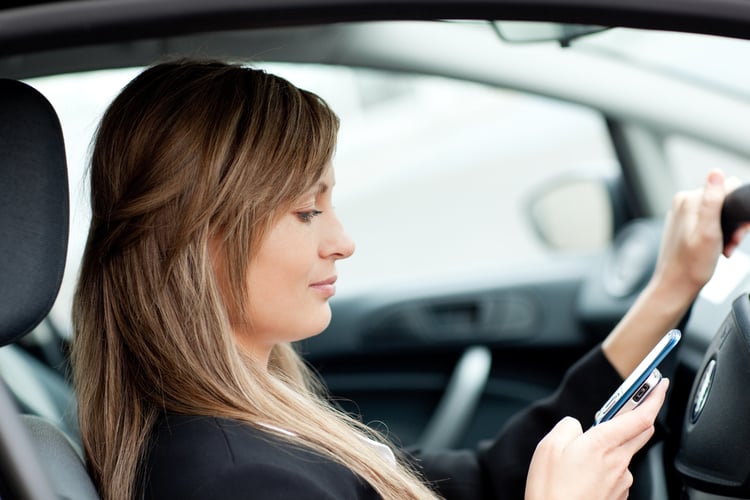
A distracted driving study recently conducted in Spain has investigated on the use of WhatsApp behind the wheel for texting (both sending and reading messages) and the consequent management of risks and speeding.
In Spain, driver distraction was the cause of 32% of all accidents recorded in 2018, with mobile phone use being the main source of distraction. Over 40% of Spanish drivers admit to sending text messages while driving, with the trend expected to continue or even increase in the coming years, due to the emergence of smartphones and instant messaging applications such as WhatsApp.
According to driving studies, manual interactions with a mobile phone significantly increase the risk of an accident because they lead to visual distraction. It seems some self-regulation mechanisms also take place while distracted, like paying less attention to the secondary task, overcorrecting the vehicle’s position, and overcorrecting or reducing speed.
When drivers are distracted by texting messages, their behaviours are different depending on whether they are reading or composing the message. Reading seems to have a greater influence on speed and reaction times, while composing messages affects speed and lane departures, indicating different levels of demand on mental awareness.
In combination with the distraction caused by texting, some studies have also shown that people reduce their speeds according to certain road characteristics, in heavy traffic, and in situations with more visual information such as urban roads. Similarly, some evidence has suggested that driver characteristics such as age, sex or other personal traits have an impact on speed management.
While driving, we have to carry out precise searches in environments cluttered with visual information in order to produce a rapid and effective response, which may be vital for safety reasons. We also self-regulate vehicle speed according to visual information from the environment; for example, reducing speed to comply with road signs, in anticipation of a potential hazard or to adapt to current traffic conditions.
A worse visual status could imply longer periods of distraction from the road when texting, leading to a greater speed reduction as a compensatory mechanism. Both driving and typing WhatsApp messages are strongly dependent visual tasks, so worse vision can be expected to have an influence on speed adaptation mechanisms, but this issue has not yet been investigated in previous studies.
Using WhatsApp while operating a moving vehicle involves visual–manual interactions, which is now a major concern in terms of road safety. If you want to eliminate this type of behaviour and detect phone use in your fleet, talk to us.





